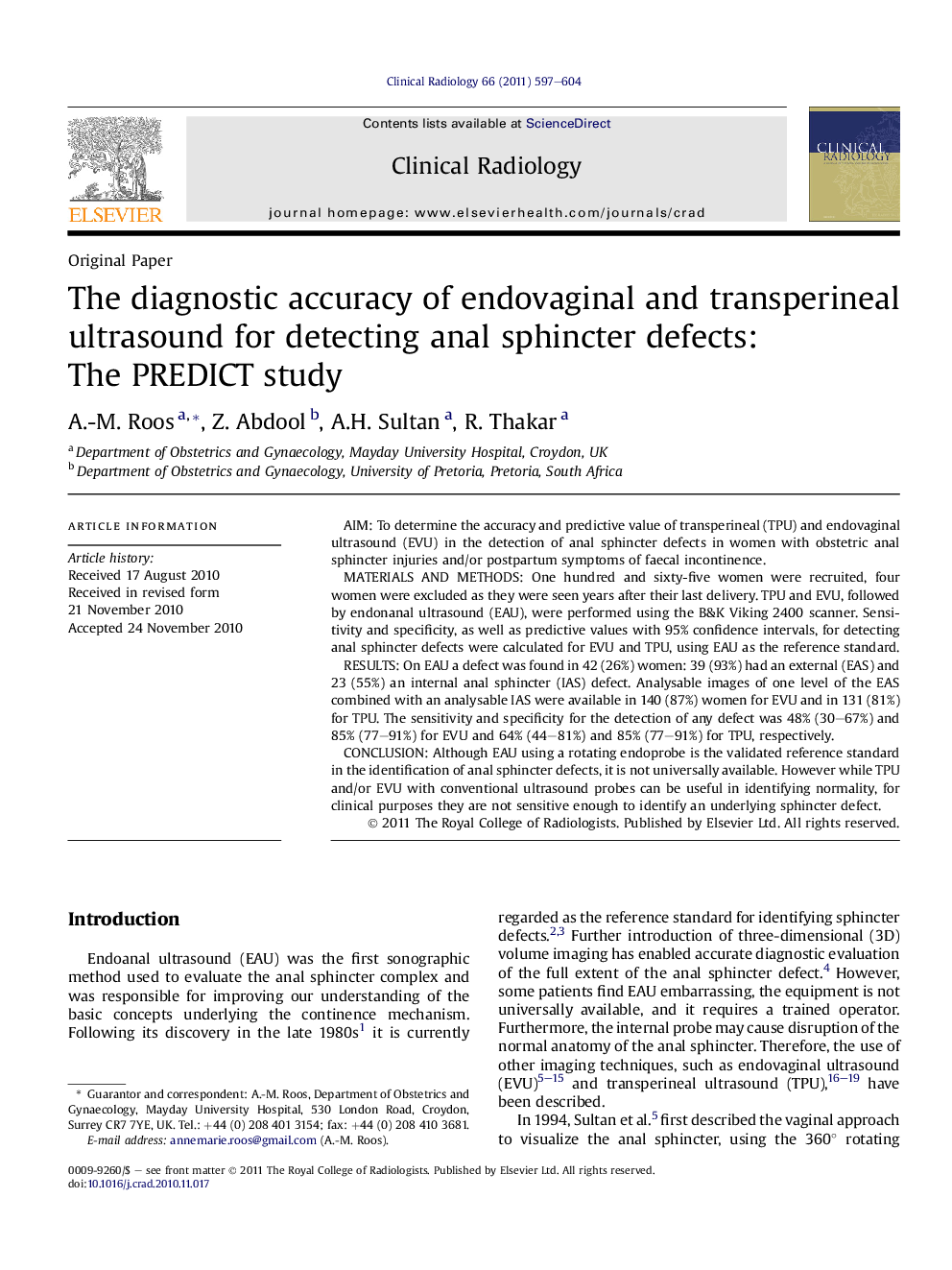| Article ID | Journal | Published Year | Pages | File Type |
|---|---|---|---|---|
| 3983052 | Clinical Radiology | 2011 | 8 Pages |
AimTo determine the accuracy and predictive value of transperineal (TPU) and endovaginal ultrasound (EVU) in the detection of anal sphincter defects in women with obstetric anal sphincter injuries and/or postpartum symptoms of faecal incontinence.Materials and methodsOne hundred and sixty-five women were recruited, four women were excluded as they were seen years after their last delivery. TPU and EVU, followed by endonanal ultrasound (EAU), were performed using the B&K Viking 2400 scanner. Sensitivity and specificity, as well as predictive values with 95% confidence intervals, for detecting anal sphincter defects were calculated for EVU and TPU, using EAU as the reference standard.ResultsOn EAU a defect was found in 42 (26%) women: 39 (93%) had an external (EAS) and 23 (55%) an internal anal sphincter (IAS) defect. Analysable images of one level of the EAS combined with an analysable IAS were available in 140 (87%) women for EVU and in 131 (81%) for TPU. The sensitivity and specificity for the detection of any defect was 48% (30–67%) and 85% (77–91%) for EVU and 64% (44–81%) and 85% (77–91%) for TPU, respectively.ConclusionAlthough EAU using a rotating endoprobe is the validated reference standard in the identification of anal sphincter defects, it is not universally available. However while TPU and/or EVU with conventional ultrasound probes can be useful in identifying normality, for clinical purposes they are not sensitive enough to identify an underlying sphincter defect.
